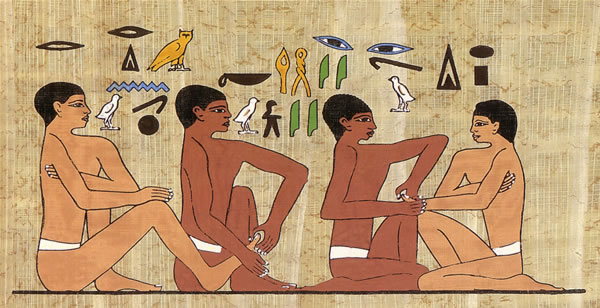Reflexology is an ancient healing system whereby pressure points on the feet and hands are stimulated in order to re-balance and benefit another area of the body.
The earliest evidence of a reflexology treatment taking place is depicted in a mural on the wall of an Ancient Egyptian physician Ankhmahor dating back to approximately 2330 BC.
The therapy was also widely used by the American Indians who used the therapy as a method of maintaining physical, mental and spiritual balance.
The Chinese have used the application of pressure as a healing therapy for over 500 years.

Modern reflexology and the Development of Zone Therapy
Zone Therapy was developed by an American medical practitioner, William Fitzgerald, who observed that applying pressure to certain parts of the body resulted in an anaesthetic effect on another part of the body.
He divided the body into 10 zones and believed that everything in a zone was linked by energy.
This theory was further developed by Eunice Ingham who realised that the zones could be accessed by the feet and hands. She used the zones to chart the whole body onto the hands and feet. These charts have different lines and landmarks which help locate the part of the foot that will help the corresponding part of the body.
The theories and practices of reflexology were brought to the UK in 1966 by Doreen Bayly.
Reflexology works on the principle that the whole body is connected and manipulating a particular area of the foot or hand has a positive benefit on the rest of the organs in that zone.
It treats the whole person rather than just the symptoms thereby providing a complete therapy.
